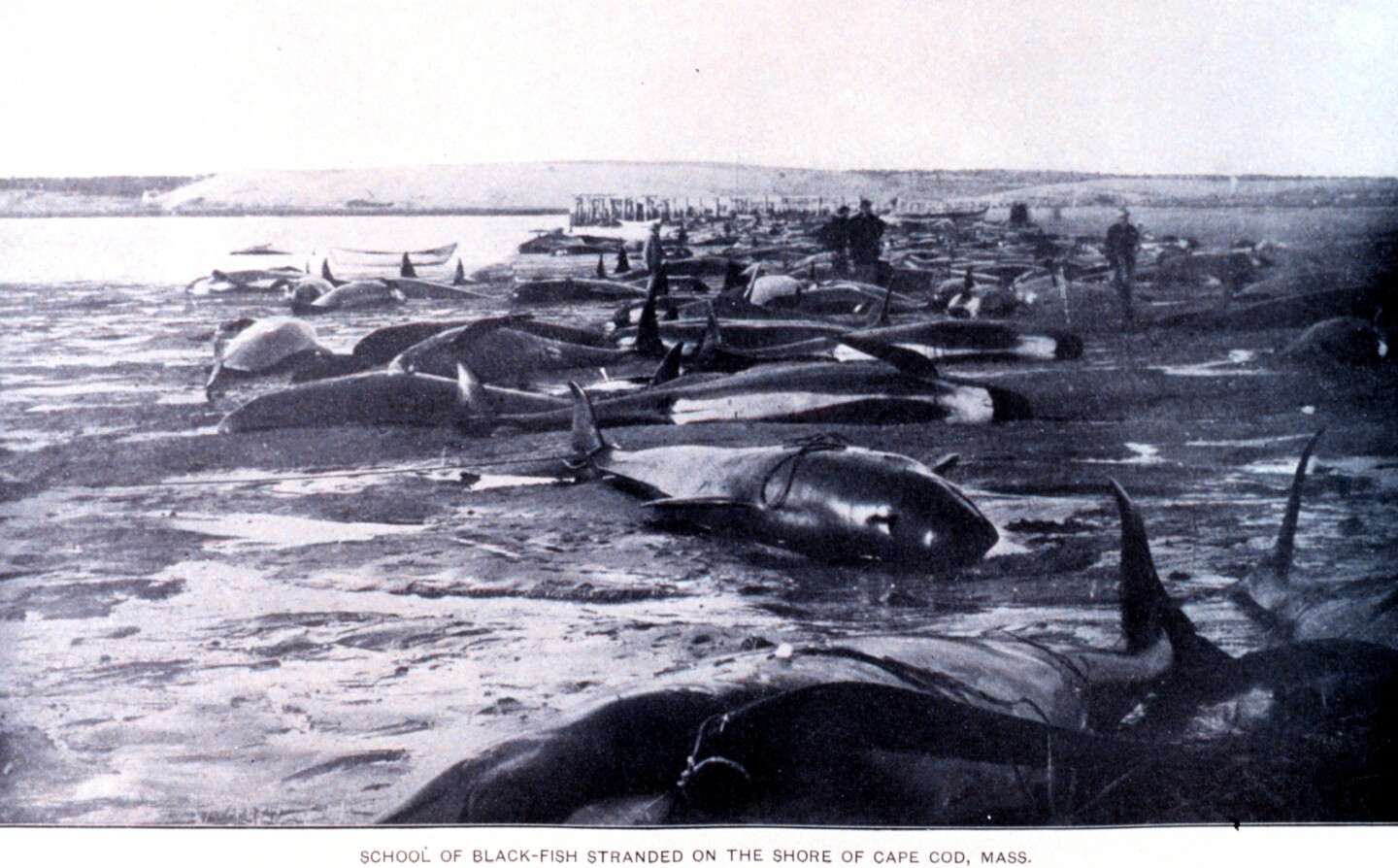Early in the morning of Friday February 9, 2017, a group arrived at the isolated Farewell Spit on the coast of New Zealand. Traveling to capture one of the world's most beautiful coastlines at sunrise, the team, including a photographer and a writer from This NZ Life, discovered the devastating sight of over 400 beached pilot whales.
New Zealand's Department of Conservation had spotted the large pod moving towards the coast overnight, but by the time anyone arrived on site Friday morning over 300 of the whales were already dead. The community sprung into action and over 500 volunteers turned out to assist with the rescue effort, but the drama wasn't over.
On Saturday afternoon a second pod of over 200 pilot whales hit the shore, turning this into the second largest mass stranding of whales in New Zealand's history. Volunteers left the site Saturday night dreading the scene they would face come Sunday morning. But in a remarkable reversal of fortune, all but 17 of the newly stranded whales had managed to self-rescue with the tide by the next day.

The tragic mass stranding of these majestic creatures in New Zealand has rekindled debate as to the mystery behind what causes mass cetacean beachings. From a new study into the effect of solar storms on the navigational abilities of whales to the potential damage that our military sonar systems cause, there are numerous theories looking to explain this long-standing conundrum.
Solar Storms
Just a few days before the historic mass whale stranding in New Zealand, NASA heliophysicist Antti Pulkkinen announced a new study was being launched to investigate whether solar storms could be a major factor behind these baffling natural tragedies. Pulkkinen suspects that magnetic anomalies caused by coronal mass ejections from the Sun could have a disorienting effect on animals that rely on magnetic-field sensing for navigation.
Pulkkinen, an expert with a comprehensive understanding of how space weather affects our planet, will undertake a rigorous data-mining operation analyzing NASA's space weather databases and animal stranding data gathered by the federal Bureau of Ocean Energy Management and the International Fund for Animal Welfare.
"What we're going to do is throw cold, hard data at this," explains Pulkkinen. "It's a long-standing mystery and it's important that we figure out what's going on."

The human influence
Environmental groups have long argued that noise pollution in the ocean, in particular the military's use of sonar, has been responsible for a number of whale stranding incidents. After numerous beaching incidents that correlated with significant military sonar exercises, the US Navy did conclude in late 2001 that a small number of stranding incidents were related to the use of sonar.
Over the following decade, several court battles resulted in a moderate amount of regulation surrounding how and where the military could conduct sonar exercises. Most recently, a 2015 settlement between the US Navy and the National Marine Fisheries Service agreed that certain marine areas be protected from training exercises that would result in significant undersea noise pollution.
While the connection between some stranding incidents and human influence has been comfortably proven, this still only accounts for a small amount of specific, and often small, beachings. The explanation behind the larger-scale mass strandings that have been reported for hundreds of years still proves more of a mystery.

Nature's whale-traps
After it was identified that there were numerous spots in the world where mass whale beachings seemed to continually reoccur, several studies began to hypothesize a link between the topography of the coast and these stranding locations. A team at the University of Western Australia concluded that a gently sloping beach can present a major problem for echo-navigation systems in cetaceans.
The team studied the topography of Ocean Beach in Tasmania, a known hot-spot for recurring cetacean beachings, and discovered the ocean slope to be nearly flat, but not quite. They found the slope to be an almost imperceptible half of one degree, resulting in a depth change of 20 meters (66 ft) over three kilometers (1.9 mi) leading to the shore.
This type of gentle-sloping in a coastline was suspected to be a major factor in causing pods of whales to unwittingly end up in unexpectedly shallow waters. The animal's echo-location processes tend to be unable to pick up this subtle gradient, resulting in them straying into waters that are difficult to navigate.
Many recurring mass stranding locations, including Farewell Spit in New Zealand, have been found to exhibit this topographical gentle-slope, leading to researchers dubbing certain geographical spots on the globe as "whale-traps."
A complex combination
We may be getting closer to understanding why the phenomenon of cetacean beaching occurs in some specific instances, but it is becoming clearer that there isn't one singular answer to this long-standing mystery. Some researchers insist social factors are important in explaining why mass beachings occur. Many species of whales exhibit incredibly social tendencies and when a member of their pod becomes trapped or in peril their cries for help could draw more to the coastline.
Other stranding incidents are thought to be a result of changing feeding patterns. A series of sperm whale strandings in recent years was suspected as related to starvation, with the animals straying into unfamiliar shallow water in search of food.
Be it solar flares, odd coastal topography, human-influenced undersea noise pollution, or a variety of social factors, the complexity of this phenomenon means that, unfortunately, it's likely to continue for many years to come. As scientists gain a greater understanding of the factors that trigger these devastating events, hopefully we will be able to predict them in advance, and therefore be better prepared to help, or even find a way to prevent them altogether.







